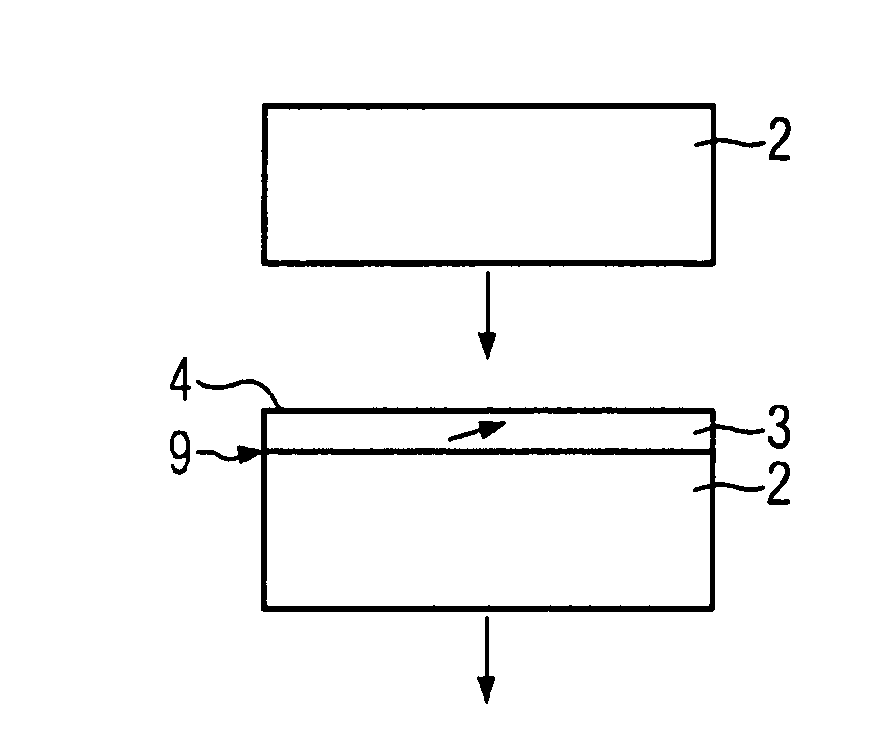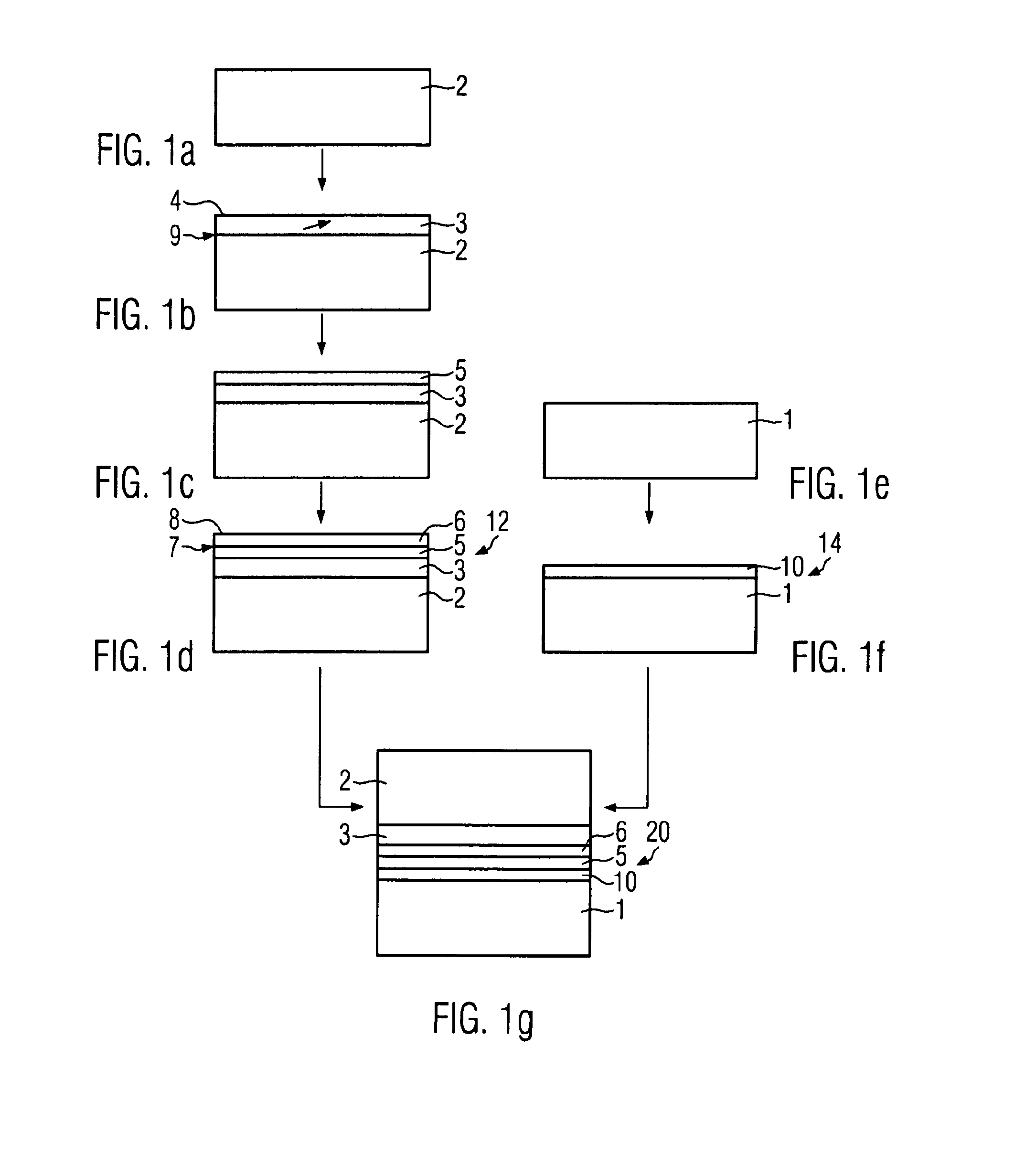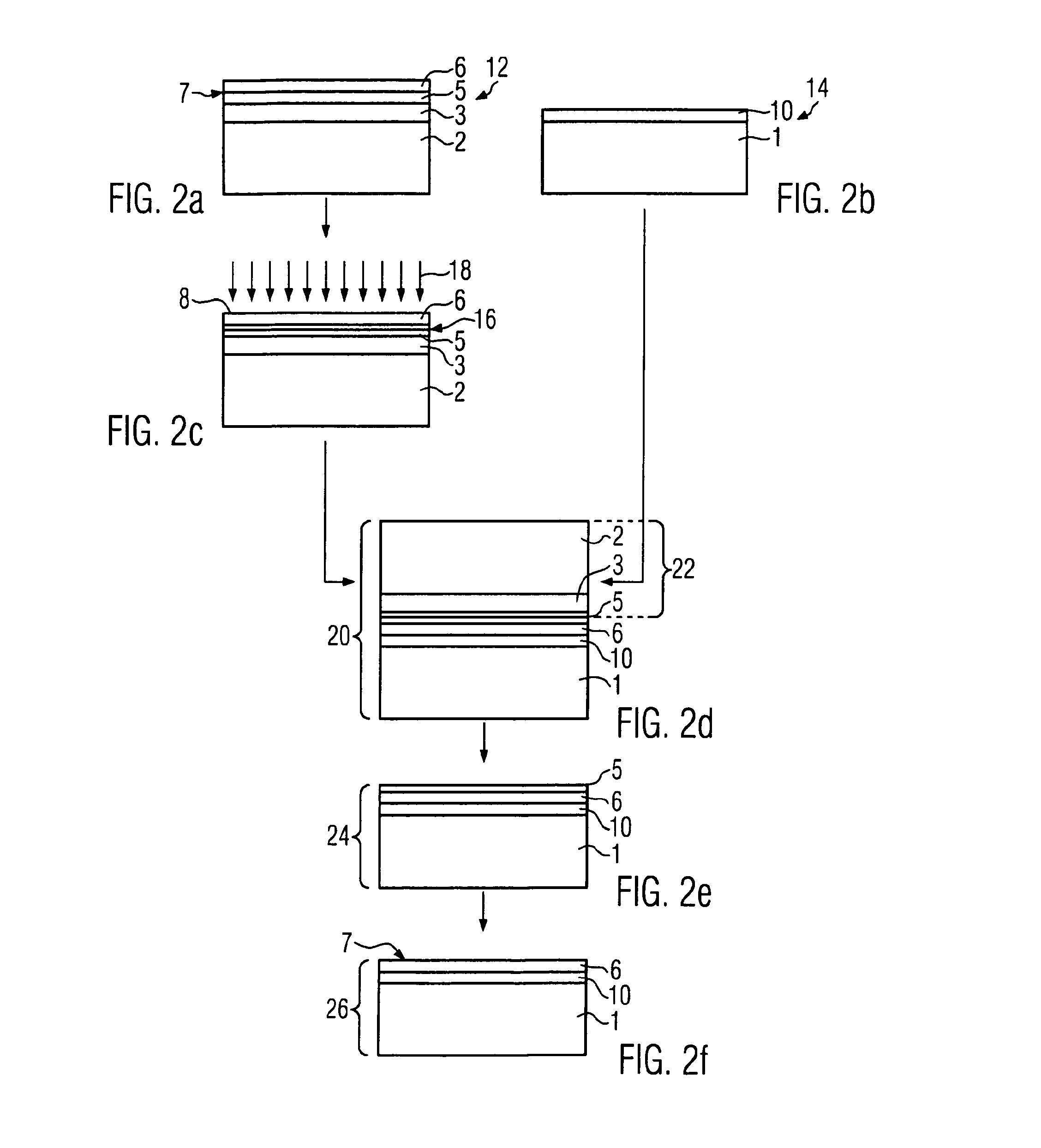Method of manufacturing a semiconductor heterostructure
a semiconductor heterostructure and manufacturing method technology, applied in the direction of basic electric elements, nanotechnology, electric instruments, etc., can solve the problems of unsuitable surface properties of semiconductor heterostructures, unsuitable for further use, and inability to apply the above described prior art processes, so as to reduce the thermal load of the donor wafer, reduce the surface roughness of the ungraded smoothing layer, and reduce the effect of surface roughness
- Summary
- Abstract
- Description
- Claims
- Application Information
AI Technical Summary
Benefits of technology
Problems solved by technology
Method used
Image
Examples
Embodiment Construction
[0019]In this context, the term “in-plane lattice parameter” corresponds to a lattice parameter of the various layers in a direction essentially parallel to the interfaces between the various layers and to lattice parameters which the layers would show in an relaxed state. It is, in fact, known that the lattice parameter depends on the material used, but also on the nature of the underlying material on which it is deposited. To be able to compare lattice parameter values of different layers in the following, it is always referred to values as if the layers were in a relaxed state, and not in the strained state under heteroepitaxial conditions, which is also known under the terms pseudomorphic or commensurate growth. As an interface may be characterized by two lattice parameters, the above-mentioned condition can either be satisfied for both lattice parameters or for only one. In addition, the top layer of the heterostructure is not necessarily the final layer, further layers straine...
PUM
 Login to View More
Login to View More Abstract
Description
Claims
Application Information
 Login to View More
Login to View More - R&D
- Intellectual Property
- Life Sciences
- Materials
- Tech Scout
- Unparalleled Data Quality
- Higher Quality Content
- 60% Fewer Hallucinations
Browse by: Latest US Patents, China's latest patents, Technical Efficacy Thesaurus, Application Domain, Technology Topic, Popular Technical Reports.
© 2025 PatSnap. All rights reserved.Legal|Privacy policy|Modern Slavery Act Transparency Statement|Sitemap|About US| Contact US: help@patsnap.com



